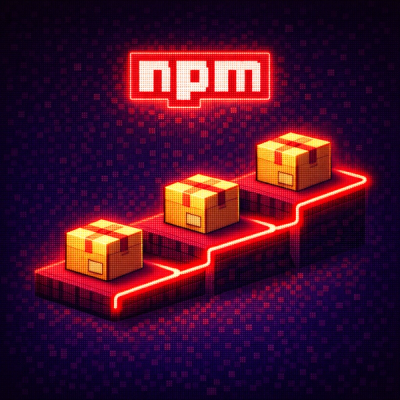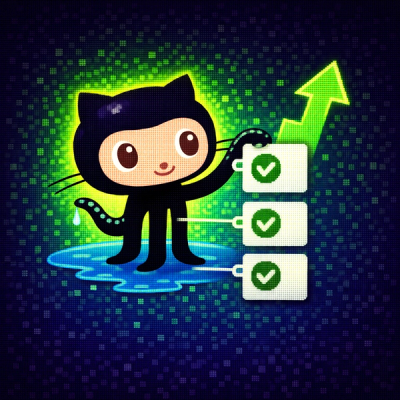gojs-angular
Version 2.0
By Northwoods Software for GoJS 2.1
This project provides Angular components for GoJS Diagrams, Palettes, and Overviews to simplify usage of GoJS within an Angular application.
The implementation for these components is inside the projects/gojs-angular folder.
See the gojs-angular-basic project for example usage and the
Intro page on using GoJS with Angular for more information.
Version 2.0 expects immutability of all @Input properties to Diagram|Palette|Overview components, and removes skipsPaletteUpdate and modelChange properties from PaletteComponent.
Installation
gojs-angular can be installed via NPM. This package has peer dependencies on GoJS and Angular, so make sure those are also installed or included on your page.
NPM
npm install --save gojs-angular
Making Changes
If you want to change how the GoJS / Angular components are implemented, you will need to edit the files in projects/gojs-angular, then, from the main directory, run
npm run package
which will create a new package in the folder, dist/angular-gojs, for you to use. Currently, gojs-angular depends on TypeScript and immer.
Usage
This package provides three components - DiagramComponent, PaletteComponent, and OverviewComponent - corresponding to the related GoJS classes.
Note: As of version 2.0, gojs-angular assumes immutability of the @Input properties given to Diagram/Palette components. The gojs-angular-basic repository provides example usage of these components, as well as preserving state immutability (that project uses immer to maintain immutability, but you can use whatever you like best).
Below is an example of how you might pass properties to each of the components provided by gojs-angular. Here, for immutable data properties that may change, they are stored in an object called state. This is not required, but helps with organization.
<gojs-diagram
[initDiagram]='initDiagram'
[divClassName]='myDiagramDiv'
[nodeDataArray]='state.diagramNodeDataArray'
[linkDataArray]='state.diagramLinkDataArray'
[modelData]='state.diagramModelData'
(modelChange)='diagramModelChange($event)'
[skipsDiagramUpdate]='state.skipsDiagramUpdate'
></gojs-diagram>
<gojs-palette
[initPalette]='initPalette'
[divClassName]='myPaletteDiv'
[nodeDataArray]='state.paletteNodeData'
></gojs-palette>
<gojs-overview
[initOverview]='initOverview'
[divClassName]='myOverviewDiv'
[observedDiagram]='observedDiagram'
></gojs-overview>
Component Properties
initDiagram/initPalette/initOverview
Specifies a function that is reponsible for initializing and returning
a GoJS Diagram, Palette, or Overview. In the case of an Overview, this
is an optional property and when not provided, an Overview with default
properties and centered content will be created.
function initDiagram() {
const $ = go.GraphObject.make;
const diagram = $(go.Diagram,
{
'undoManager.isEnabled': true,
model: $(go.GraphLinksModel, {
linkKeyProperty: 'key'
})
});
diagram.nodeTemplate =
$(go.Node, 'Auto',
$(go.Shape, 'RoundedRectangle', { strokeWidth: 0, fill: 'white' },
new go.Binding('fill', 'color')),
$(go.TextBlock,
{ margin: 8 },
new go.Binding('text', 'key'))
);
return diagram;
}
divClassName
Specifies the CSS classname to add to the rendered div.
This should usually specify a width/height.
.myDiagramDiv {
width: 400px;
height: 400px;
border: 1px solid black;
}
nodeDataArray (DiagramComponent and PaletteComponent only)
Specifies the array of nodes for the Diagram's model.
nodeDataArray: [
{ key: 'Alpha', color: 'lightblue' },
{ key: 'Beta', color: 'orange' },
{ key: 'Gamma', color: 'lightgreen' },
{ key: 'Delta', color: 'pink' }
]
Optional - linkDataArray (DiagramComponent and PaletteComponent only)
Specifies the array of links for the Diagram's model, only needed when using a GraphLinksModel, not for Models or TreeModels. If are using this property, make sure to set the GraphLinksModel's linkKeyProperty in its corresponding initDiagram or initPalette function.
linkDataArray: [
{ key: -1, from: 'Alpha', to: 'Beta' },
{ key: -2, from: 'Alpha', to: 'Gamma' },
{ key: -3, from: 'Beta', to: 'Beta' },
{ key: -4, from: 'Gamma', to: 'Delta' },
{ key: -5, from: 'Delta', to: 'Alpha' }
]
Optional - modelData (DiagramComponent and PaletteComponent only)
Specifies a shared modelData object for the Diagram's model.
skipsDiagramUpdate (DiagramComponent only)
Specifies whether the Diagram component should skip updating, often set to true when updating state from a GoJS model change.
Because GoJS Palettes are read-only by default, this property is not present in PaletteComponent.
modelChange (DiagramComponent)
Specifies a function to be called when a GoJS transaction has completed.
This function will typically be responsible for updating app-level state. Remember, these state properties are assumed to be immutable. This example modelChange, is taken from the gojs-angular-basic project, which uses immer's produce function to maintain immutability.
It is important that state updates made in this function include setting skipsDiagramUpdate to true, since the changes are known by GoJS.
Because GoJS Palettes are read-only by default, this property is not present on PaletteComponent. Although there won't be user-driven changes to a Palette's model due to the read-only nature of Palettes, changes to the nodeDataArray, linkDataArray, or shared modelData props described above allow for a Palette's model to be changed, if necessary.
public diagramModelChange = function(changes: go.IncrementalData) {
const appComp = this;
this.state = produce(this.state, draft => {
draft.skipsDiagramUpdate = true;
draft.diagramNodeData = DataSyncService.syncNodeData(changes, draft.diagramNodeData, appComp.observedDiagram.model);
draft.diagramLinkData = DataSyncService.syncLinkData(changes, draft.diagramLinkData, appComp.observedDiagram.model);
draft.diagramModelData = DataSyncService.syncModelData(changes, draft.diagramModelData);
});
};
Notice the use of the three static functions of the DataSyncService (syncNodeData, syncLinkData, and syncModelData), which is included with this package to make syncing your app-level data with Diagram / Palette data simple.
Be aware: If you have set your Diagram's model.nodeKeyProperty or model.linkKeyProperty to anything other than 'key', you will need to pass your Diagram's model as a third parameter to DataSyncService.syncNodeData and DataSyncService.syncLinkData.
observedDiagram (OverviewComponent only)
Specifies the Diagram which the Overview will observe.
License
This project is intended to be used alongside GoJS,
and is covered by the GoJS software license.
Copyright 1998-2021 by Northwoods Software Corporation.



